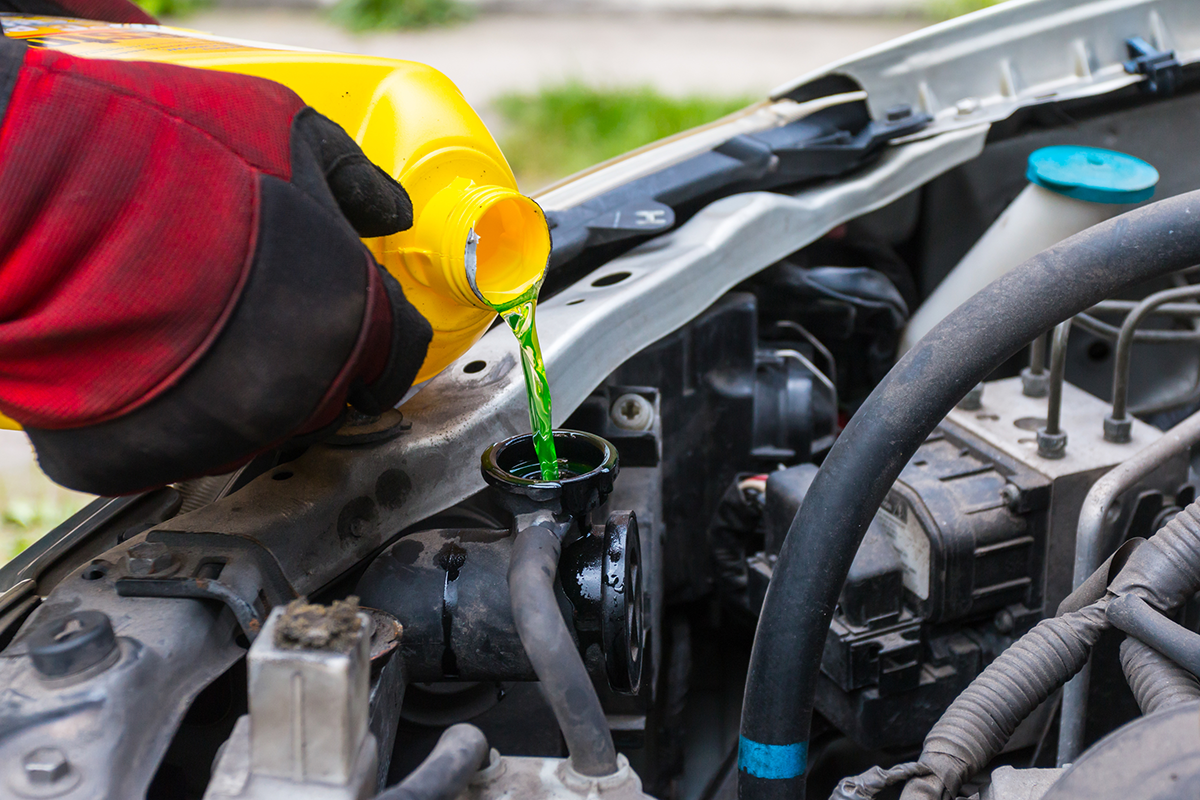The Versatile Fluid That Changed The World

Anyone who lives in cold weather knows the importance of antifreeze. The mixture that celebrates in 100th anniversary in 2018 proves invaluable in making sure your engine starts every morning.
Antifreeze was invented to overcome water’s limitations as a heat transfer fluid. It helps engines tolerate a extreme cold climates but environments with extreme heat as well.
The compound is typically made by mixing distilled water with additives and a base, like mono ethylene glycol or mono propylene glycol. Some antifreezes contain additives that prevent corrosion and/or give the liquid a distinctive color.
The fascinating history of antifreeze began in Paris during the Napoleonic era:
1856: French chemist Charles-Adolphe Wurtz develops ethylene glycol, a substance with a lower freezing point and higher boiling point than water. It also has a low viscosity, which makes it easy to pump and transmit through lines.
Late 1800s, early 20th Century: Methyl and wood alcohols are used to prevent early automobiles from overheating. While these industrial solvents had lower freezing temperatures than water, they were highly corrosive to metal components.
Early 1900s: Glycerol is widely used as antifreeze, but it’s expensive to produce and eventually replaced by ethylene glycol.
1918: Ethylene glycol is commercially produced, primarily for use in explosives.
1926: Ethylene glycol is first used as an automotive antifreeze. It’s widely used by the military during World War II.
Post World War II: Ethylene glycol becomes the dominant chemical antifreeze on the market. Propylene glycol and organic acid technology (OAT) are alternatives to ethylene glycol, which still enjoys the lion’s share of the market.
2007: A report studies the practicality of glycerol-based antifreeze, which is nontoxic and less expensive to produce now than it was in the early 20th Century.
Fun fact: Ethylene glycol is also used in the manufacturing of polyester fibers.
Pet owners, read this: Unfortunately, antifreeze’s main ingredient (ethylene glycol) has a taste some animals find appealing. And it doesn’t take much of the highly toxic chemical to be fatal for dogs and cats. As little as one tablespoon can kill a dog, while one teaspoon is sufficient for cats.
Ingestion can cause vomiting, seizures, kidney failure and comas, according to the Pet Poison Hotline. An antidote (fomepizole) exists, but it is expensive and must be administered quickly. Dogs must receive the antidote within the first 8 to 12 hours of ingestion, while cats must receive the medicine within 3 hours of ingestion to be effective.
Copyright © 2018 Sensible Driver. All rights reserved.